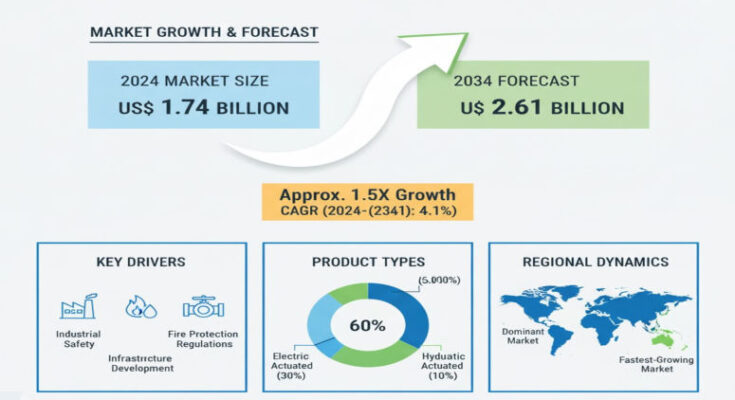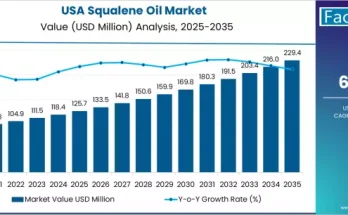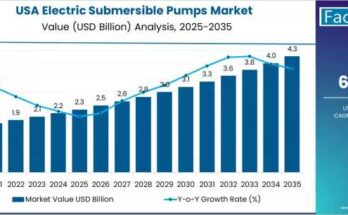The global heat meter market is gaining significant momentum as energy conservation and sustainability continue to dominate the global industrial and residential landscape. The market is projected to rise from a valuation of US$ 3.34 billion in 2024 to nearly US$ 5.09 billion by 2034, registering a steady CAGR of 4.3% during the forecast period. Increased government emphasis on energy-efficient systems, combined with the growing adoption of smart metering technology, is accelerating market growth across multiple regions.
Growing Importance of Accurate Heat Measurement
A heat meter is an essential device used to measure thermal energy consumed in heating or cooling applications. Its role has become increasingly critical in residential, commercial, and industrial buildings due to rising energy costs and the need for transparent billing systems. Governments and energy regulators across the world are implementing strict norms that mandate the use of heat meters to improve efficiency and reduce energy wastage.
The surge in district heating and cooling networks in urban regions has further fueled the demand for these meters. As cities expand and modernize their infrastructure, accurate energy monitoring becomes a cornerstone for sustainable development. Smart heat meters—equipped with wireless communication, real-time monitoring, and automated data analysis—are replacing traditional models to meet these advanced energy management requirements.
Market Dynamics and Key Growth Drivers
Several factors are propelling the growth of the heat meter market. The foremost driver is the implementation of stringent government policies that promote energy conservation. Many European nations and rapidly urbanizing economies in Asia are investing heavily in district heating systems, where heat meters are mandatory for fair billing and system optimization.
Another critical growth factor is the rising consumer awareness of energy efficiency and cost savings. Homeowners and commercial facilities are increasingly adopting heat meters to monitor energy use and reduce expenses. Technological innovations, such as IoT-enabled heat meters and advanced sensors, are also transforming the market by offering improved accuracy, connectivity, and long-term reliability.
However, the market faces challenges such as the high installation cost of advanced meters and data security concerns associated with connected devices. Nonetheless, ongoing research and government initiatives to promote smart energy management systems are expected to mitigate these challenges.
Regional Insights
Europe currently dominates the global heat meter market, accounting for a substantial share owing to well-established district heating infrastructure and stringent energy regulations. The region’s commitment to achieving carbon neutrality by 2050 has led to a massive expansion of smart metering projects.
North America follows closely, driven by increasing government incentives for smart infrastructure development and growing demand for efficient energy distribution in residential and commercial complexes. The United States and Canada are focusing on integrating smart heat meters with building automation systems, enabling real-time tracking and remote management, By 2034, North America is expected to generate 38.1% of global market revenue.
Asia Pacific is anticipated to emerge as the fastest-growing region during the forecast period. Countries like China, India, and Japan are witnessing rapid industrialization and urbanization, leading to higher energy consumption. China, in particular, is projected to reach a market value of over US$ 1 billion by 2034, supported by strong policy measures and infrastructure investments in district heating systems. The region’s expansion offers significant opportunities for both international and domestic manufacturers.
Key Market Segments
Based on type, the market is categorized into mechanical heat meters and static heat meters. Static heat meters—particularly ultrasonic variants—are expected to hold a major share due to their superior accuracy, low maintenance, and suitability for modern smart systems.
By end user, the residential segment is projected to capture around 46% of the market share by 2034, as energy monitoring becomes more common in household heating applications. The industrial and commercial segments are also expected to witness strong growth owing to increased adoption of district energy systems in factories, offices, and public buildings.
Key Players and Competitive Landscape
The global heat meter market is moderately consolidated, with key players focusing on technological innovation, mergers, and strategic collaborations. Leading companies are introducing advanced heat meters with IoT integration, wireless communication, and analytics-driven performance insights.
Prominent players include Siemens AG, Kamstrup A/S, Diehl Stiftung & Co. KG, Landis+Gyr, Danfoss, Zenner International GmbH & Co. KG, Apator SA, BMETERS, Secure Meters Limited, and Axioma Metering. These companies are actively working to enhance product durability, accuracy, and connectivity to meet evolving global standards.
Strategic partnerships with smart city developers and utility providers have become a common approach among major manufacturers. This not only broadens their customer base but also strengthens their role in shaping the next generation of energy-efficient solutions.
Browse Full Report: https://www.factmr.com/report/heat-meter-market
Recent Developments
In recent years, the market has seen an influx of innovations focused on digitalization and sustainability. Several manufacturers have launched smart ultrasonic heat meters capable of remote data transmission and integration with building management systems. For instance, leading players are developing low-power IoT-enabled meters that transmit consumption data through secure cloud networks, minimizing manual intervention and human error.
Additionally, governments in several regions are introducing rebate programs and incentives to encourage the installation of heat meters in residential buildings. These financial incentives are particularly effective in emerging economies, where upfront costs remain a challenge for consumers.
Manufacturers are also prioritizing eco-friendly production practices by reducing the environmental footprint of their manufacturing processes and utilizing recyclable materials in device construction. Such efforts align with global sustainability goals and enhance brand reputation.
Future Outlook
The future of the heat meter market lies in the integration of digital technologies and the expansion of district heating networks worldwide. As urbanization accelerates and energy regulations tighten, heat meters will play a vital role in achieving carbon reduction targets. The increasing penetration of renewable heating sources such as geothermal and solar thermal systems will also create new opportunities for heat meter applications.
Between 2024 and 2034, the market is expected to witness growing collaborations between metering technology firms, smart grid developers, and governments to establish unified standards and interoperable solutions. By combining precision measurement, data intelligence, and sustainability, the industry is poised to evolve into a cornerstone of modern energy management.



